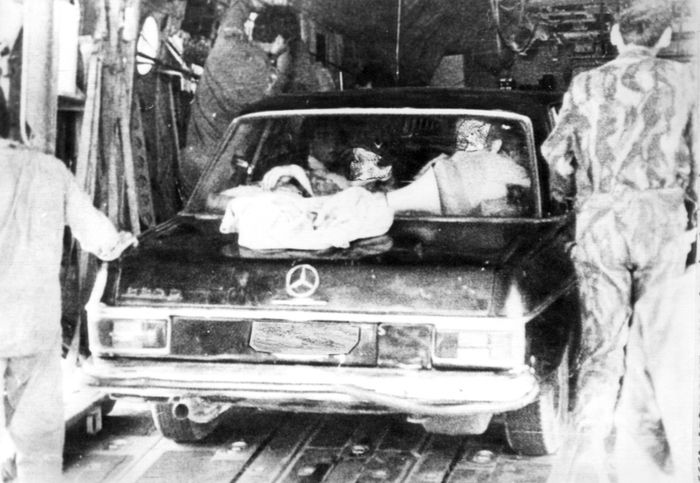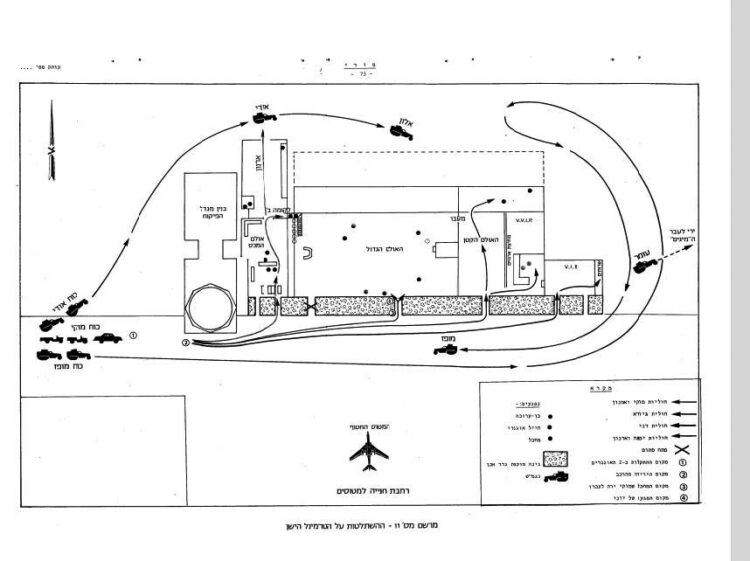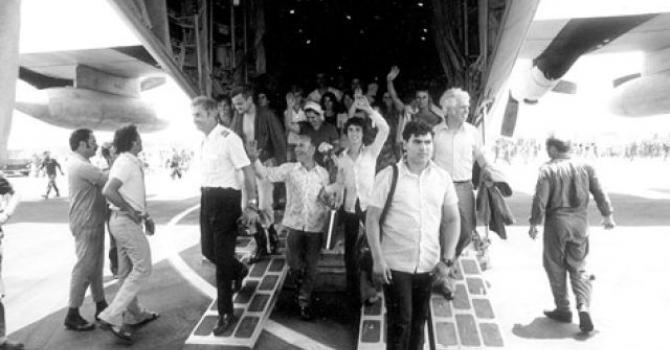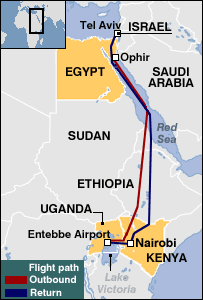
The IDF, or the Israeli Defense Forces, is the military organization responsible for the defense and security of the State of Israel. It is a unified force comprising the army, navy, and air force, with a focus on protecting the country from external threats, maintaining security within its borders, and conducting various peacekeeping and humanitarian missions. It traces its origins back to pre-state Israel and the paramilitary organizations that emerged during the period of British Mandatory Palestine (1920-1948). These organizations were formed to defend Jewish communities against hostile attacks and to resist British rule.
During the 1948 Arab-Israeli War, which followed the declaration of the State of Israel, these disparate paramilitary groups were merged to form the IDF. David Ben-Gurion, the first Prime Minister of Israel, declared the establishment of the IDF on May 26, 1948. The IDF’s creation marked a significant milestone in Israel’s history as it symbolized the transformation of the Jewish community’s self-defense forces into a professional military organization.
The IDF faced numerous challenges and conflicts in its early years. It fought in the War of Independence (1948-1949) against neighboring Arab armies seeking to prevent the establishment of Israel. Over the years, the IDF has been involved in various military engagements, including the Suez Crisis (1956), the Six-Day War (1967), the Yom Kippur War (1973), and numerous conflicts with militant groups operating in the region.
The IDF has also played a vital role in counterterrorism operations, intelligence gathering, and maintaining security in the face of ongoing threats. It has developed advanced military technologies and strategies, emphasizing the integration of ground, air, and naval capabilities to ensure Israel’s defense. Conscription, known as mandatory national service, is a key aspect of the IDF. Most Israeli citizens, both men and women, are required to serve in the military upon reaching the age of 18, with some exceptions granted for religious or medical reasons. This conscription system fosters a sense of national unity and provides a broad base of trained personnel to the IDF.
The IDF has evolved over the years, adapting to changing security challenges and incorporating modern warfare techniques. It continues to play a critical role in safeguarding Israel’s sovereignty, defending its citizens, and maintaining regional stability. Now, onto the Raid at Entebbe:
The events leading up to the Raid at Entebbe began on June 27, 1976, when Air France Flight 139, carrying 248 passengers and a crew, was hijacked by members of the Popular Front for the Liberation of Palestine – External Operations (PFLP-EO), and the German Revolutionary Cells. The hijackers diverted the plane to Entebbe Airport in Uganda, where they held the passengers hostage. I am not going to write about the raid, as there is so much interesting information about it online. Here is what Encyclopedia.com wrote:
On Sunday, June 27, 1976, an Air France jet plane en route from Tel Aviv to Paris with over 200 passengers on board, including 80 Israelis, was hijacked after it took off from Athens where it had made an interim landing. The hijackers claimed to belong to the Popular Front for the Liberation of Palestine. The plane landed at Benghazi Airport in Libya later the same day, and after refueling there (although Libyan authorities denied this), it took off in the direction of Amman and ultimately landed at Entebbe Airport near Kampala, Uganda, in complete darkness.
On Wednesday, June 30, the terrorists – after releasing 47 of the passengers, including elderly women, children, and the sick – issued their demands for the release of 53 Palestinian terrorists imprisoned in various countries, 40 of them in Israel, setting the following Thursday at noon as the deadline, and threatening to kill all the remaining passengers and blow up the plane if their demands were not met. Later, they extended the deadline for another 24 hours.
Meanwhile, on the previous two days the hijackers released 148 passengers, most of them Jews who were not Israelis, leaving 102 hostages, mostly Israelis, plus the crew of the airline.
On July 1, the Israeli government announced that it would submit to the demands of the hijackers and officially asked France to negotiate on its behalf for the return of the hostages.
It later transpired, however, that from the moment that the hijack took place a rescue plan was drawn up, and on July 4, Israel and the whole world thrilled at the news of an attack by an Israeli commando unit at Entebbe, which effected the release of the hostages. The operation was rightly described as the most daring and incredible rescue mission in military history, taking place as it did, in a hostile country, 2,500 miles distant and with minimal time for planning its complicated details. The operation, which had been kept a guarded secret, was under the command of Brigadier-General Dan Shomron and was carried out with giant American Hercules transport planes.
The rescuers landed at the airport with orders only to return fire directed at them and did so at Ugandan soldiers who fired at them from the control tower. Storming the place where the hostages had been housed, they shouted to them to keep their heads down, with the result that the rescue was thus effected with a minimum of loss of life.
Three of the civilians lost their lives, two in the actual operation and one succumbing to wounds in Nairobi Hospital. There was a single military casualty – Lt.-Col. Jonathan (“Yoni”) Netanyahu, commander of the strike force, the 30-year-old son of Professor Ben-Zion Netanyahu. He was buried with full military honors in the Military Cemetery on Mt. Herzl. Among those present were President Katzir, Prime Minister Rabin, and Chief of Staff Mordecai Gur.
One hostage, Mrs. Dora Bloch, was left behind, since she had earlier been taken to a hospital in Kampala and it transpired that she was later brutally murdered.
Kurt Waldheim, secretary-general of the un, described the rescue operation as a violation of Ugandan sovereignty and claimed that the situation created by it was likely to have serious international repercussions, especially as far as Africa was concerned. (It was in fact condemned at a summit meeting of the Organization of African Unity.) This, however, was the only discordant note in a flood of congratulations which poured in, including one from President Ford – a message which was declared to be “unprecedented,” since no American president had ever congratulated Israel on a military action.
The Entebbe Raid was a resounding blow against terrorism, which had been rapidly gaining global momentum during that era. The mission demonstrated that no act of terrorism would go unanswered and that nations were willing to undertake high-risk operations to protect their citizens from such threats. It served as a powerful deterrent, illustrating that terrorism would not be allowed to dictate terms or undermine the international community’s resolve to combat it.
The Raid at Entebbe showcased the exceptional skills and capabilities of the Israeli Defense Forces. Their ability to plan and execute a long-range operation with such precision was unprecedented and solidified Israel’s reputation as a formidable military power. The mission involved flying undetected over thousands of miles, navigating hostile territory, and overwhelming the terrorists with lightning speed—a testament to the IDF’s proficiency and professionalism.
The Raid demonstrated the importance of international cooperation and diplomacy in confronting acts of terrorism. Israel received intelligence support from various countries, including Kenya, which provided crucial information about the airport layout. Additionally, cooperation between Israel and other nations, such as France and the United States, was instrumental in ensuring the mission’s success. The raid highlighted the necessity of collaborative efforts to combat global security threats effectively.
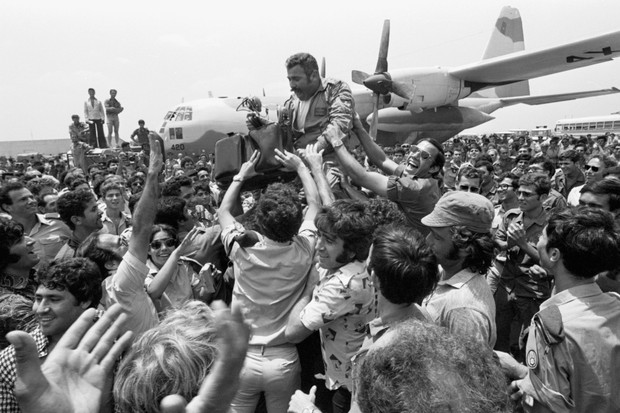
The primary objective of the Entebbe Raid was to save the innocent hostages held captive by the terrorists. During the meticulously planned operation, IDF commandos stormed the airport terminal, swiftly eliminating the terrorists, and successfully rescuing 102 hostages. Tragically, three hostages were killed during the operation, along with Lieutenant Colonel Yonatan Netanyahu, the commander of the IDF special forces unit. Nonetheless, the operation saved the lives of many, and the heroic actions of the IDF commandos instilled hope and resilience in the hearts of people around the world.
The Raid at Entebbe left an indelible mark on global counterterrorism efforts. Its success reverberated across nations, inspiring security forces to reevaluate their strategies in combating terrorism. It prompted the establishment of specialized units, improved intelligence sharing, and enhanced coordination between countries to respond swiftly and decisively to terrorist threats. The lessons learned from Entebbe continue to shape the training and tactics employed by special forces worldwide, reinforcing the commitment to protecting innocent lives from acts of terror.
If you want to watch two movies about the Raid, see the 1977 movie with Charles Bronson and the 2018 movie with Rosamund Pike. The 1977 movie was directed by Irvin Kershner who also happened to direct the Star Wars movie The Empire Strikes Back. Peter Finch and Charles Bronson starred in Raid On Entebbe. The movie was based on actual events. In July 1976, an Air France flight from Tel-Aviv to Paris via Athens was hijacked and forced to land in Entebbe, Uganda. The film recounted the events and response of the Israeli government and the controversy that the rescue stirred.
Another production beat Raid to the screens and it was called Victory at Entebbe. Victory had an all-star cast that included Elizabeth Taylor, Kirk Douglas, Burt Lancaster and Anthony Hopkins. That movie was rushed through production by ABC and broadcast one month earlier in December 1976. The 2018 version titled Entebbe is for a new generation of viewers and also for those who watched the news of the event live on television. Again, four hijackers take over an airplane, take the passengers hostage, and force it to land in Entebbe, Uganda.


